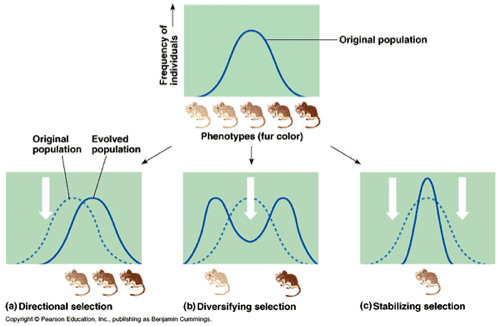Natural selection is the Darwinian notion that individuals that are better adapted to their environment will have a greater reproductive success. Individuals that have advantageous or traits that help them adapt to their specific habitat will be more likely to have more offspring, thus perpetuating the presence of that trait in the population. When we talk about alleles being "under selection," we refer to the genetic basis of traits and how they are passed on through the progeny.
In this class, we discuss mainly how climate change acts as an agent for selection, or a selective pressure, and how it has widespread effects on population genetics, morphology and development, population movement, etc.
There are two mechanisms of selection:
- Positive selection - increases the prevalence of advantageous alleles in a population (rare), which increase and individual's fitness
- Negative selection - decreases the prevalence of deleterious alleles in a population, which decrease an individual's fitness
These types of selection produce three different effects in the population
- Stabilizing selection - Genetic diversity decreases as the population stabilizes on a particular trait, favors the intermediate traits over extreme ones. According to Hoffmann, stabilizing selection is "likely to occur on hatching/breeding times in birds colonizing new areas where food supply and breeding times coincide."
- Disruptive (or diverging) selection - The population splits into two distinct phenotypic groups on either ends of the spectrum, favors homozygosity and extreme values for a trait
- Directional selection - A single phenotype is favored, thus the genotypic frequency of the population tends to move in one direction

Comments